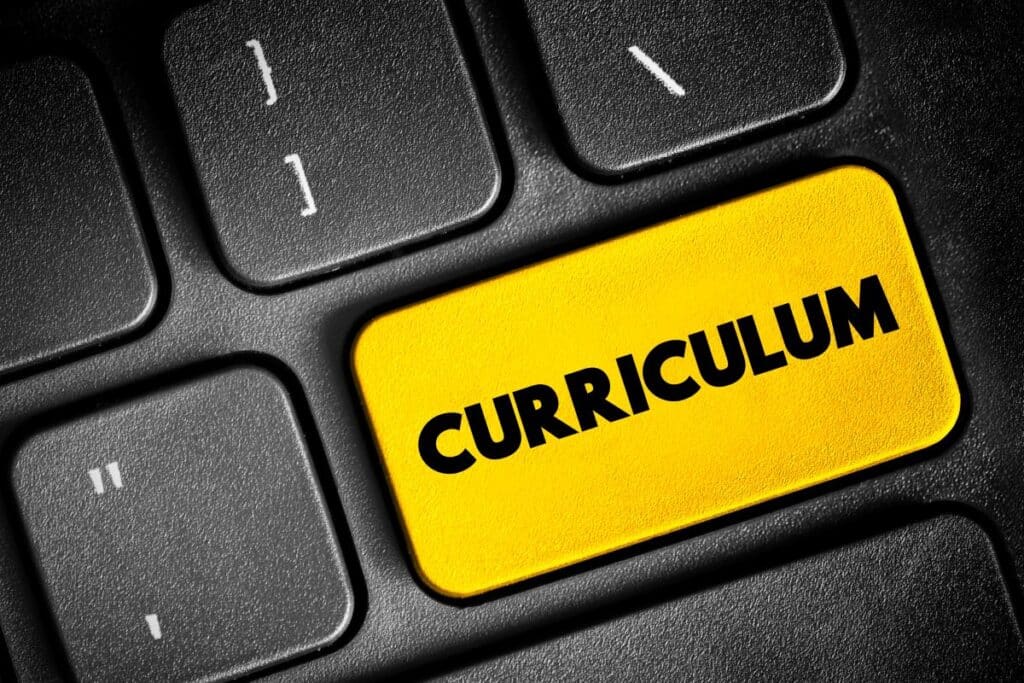Nothing can affect the spirit like a refreshing change, whether it is by way of new scenery, beginning new relationships, or simply changing one’s routine to mix things up. A similar feeling exists for educators when it comes to updating an old curriculum.
Applying new content, research-based strategies, and modernized activities enhances students’ experience and re-energizes teachers. New materials and focal points can also support all stakeholders’ needs and add contemporary value to our lives.
While teachers are often the ones determining new content, reforming instructional and pedagogical practices, and revising assessment opportunities, school administrators are integral partners in supporting the implementation of this new curriculum. So, how can administrators help teachers adapt to new curriculum applications?
Focusing On School Vision and Mission Statements
One of the strongest ways administrators can support new changes is by focusing the committee members on school vision and mission statements. Guiding teachers to reflect upon school and district goals to ensure students are becoming successful contributors to society is a strong first step toward implementing this curriculum. Principals who provide focused, modern interpretations will open the doorway for teachers to be innovative and creative in their thinking.
Innovation and Questioning Traditional Methods
Another powerful method for administrators to support their teachers is to challenge them to be innovative and question traditional methods, or the “This is what we have always done” thinking.
Inspiring teachers to adjust their philosophical patterns will allow freedom to open up in order to provoke change and build culture. Providing research and examples for teachers allows them to comprehend the expectations of administration better and take some chances with the new curricular changes or additions.
Administrators may help teachers through inquiry-based models that allow exploration into critical thinking, whether through a specific microcosm lesson or through the macrocosmic way of integrating the big ideas or universal questions theories.
Providing critical thinking experiences for students of all ages to explore questions, collaborate with peers, analyze and synthesize information to draw their own conclusions, and encourage depth of research are ways for teachers to expand their classroom curriculum.
Typical teaching methods are designed as question-answer models, so by transitioning to only providing open-ended questions, while uncomfortable at first, it allows students to share more than one aspect of thinking. Students become active learners in their own education by working through the systematic components of rationalized thinking.
Having students read case studies can not only provide chances to evaluate what has occurred historically through research but also promote their own investigations and hypotheses regarding real-world applications.
Nothing can cement learning more than students’ own experiences. Socratic discussions, jigsaws, and think-pair-share activities are all examples that deliver valuable collaborative and thought-provoking moments.
Embracing AI
Administrators who embrace and implement the increasingly popular world of Artificial Intelligence (AI) into new curriculums can prepare outstanding opportunities for students in the classroom.
Showing teachers how it can personalize information to differentiate lessons is a powerful expectation. The constantly evolving landscape of AI can tailor to individual needs, optimize educational materials incorporated within the new curriculum, and enhance teaching methodologies.
Teachers become the ultimate curriculum designer in enhancing the educational experience with AI: they can use the content to derive newer and better assessments; they are the comprehensive specialists in designing instructional pedagogies; and they can deliver more rigorous and relevant lessons to challenge students.
Numerous strategies are being implemented in classrooms around the world. For instance, students at several universities are using AI chatbots as sparring partners in order to prepare for debates, measuring their arguments against practice foes.
Teachers who are building argumentative writing into their curriculum may be able to employ similar strategies while maintaining educational integrity. Applying AI to historical research in social studies classes can enhance their understanding of historical patterns, perhaps with war tactics practiced by generals.
And mathematics instructors can certainly employ strong approaches with AI regarding mathematical concepts and theories, ranging from learning games to hands-on projects that delve into exploration and discovery, instead of traditional skill-and-drill homework exercises. Administrators can be extremely beneficial leaders as they help teachers weave their ways through these topics.
The Role of Administration in Implementing New Curriculum
Principals have a special role in their school districts. They are still considered important with boots-on-the-ground experiences, similar to teachers, but often with a more comprehensive and global vision of understanding. Their abilities to manage events, both positive and negative, can provide excellent examples for teachers to adapt to new curriculums.
Involvement in supervision, specifically with curriculum, instruction, and assessment is invaluable in their roles as visionaries. While researching instructional methods can provide numerous examples and utilizing AI to help build strong assessments can be advantageous, selecting and executing valuable exemplar texts is a major and intimidating component.
Yet another powerful tool in aiding teachers in their curricular transitions is for administrators to find ways to send them to appropriate conferences, research institutes, and educational professional development sessions that will allow them to gather powerful resources to integrate within their districts and classrooms successfully.
While school districts feel the pressure of financial concerns, administrators need to prioritize finding the monies that will strengthen the professional nature of their teachers. This will not only show an investment in educators but will support cultural growth among teachers in each building.
In order to keep up with the changes in diversity of students around the nation, adjustments in the curriculum must be appropriate and represent the most up-to-date research. Administrators must help organize the goals and objectives, then have significant roles as change agents throughout the entire process.
Guiding teachers during the process will allow a freedom to explore, implement creativity, forge into a world of innovation and become the strongest cheerleaders for their students. Not only does designing a new curriculum become a major challenge, but implementing a new curriculum can be even more daunting to members in all levels of a school. Administrators and educators must collaborate in order to provide top-notch experiences for students.
Educators never stop learning; check out our available graduate degree programs to hone your skills and promote lifelong learning and academic excellence.




